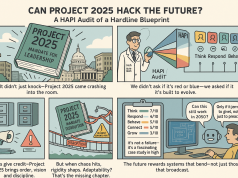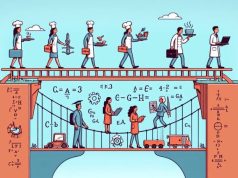The burgeoning skill gap in blue-collar industries is more than just an inconvenience—it’s a harbinger of the potential rifts in our future economy and workforce. As an experienced Blue-Collar Worker Representative, I’ve witnessed firsthand the way the tides of industry have shifted, leaving a noticeable disconnect between the expertise of today’s labor force and the demands of tomorrow’s job market.
The roots of this gap run deep. The aging workforce is one major factor, with baby boomers retiring in droves and taking with them decades of experience and specialized skills. To add to this, there’s a significant cultural undercurrent that has, for generations, pushed young people toward four-year colleges and away from vocational training and trades.
Vocational training and apprenticeships are critical avenues for acquiring particular skill sets, yet they are often undervalued. These programs not only provide hands-on experience but also foster a pipeline of skilled labor prepared to meet specific industry needs. Apprenticeships, in particular, offer a unique blend of on-the-job training paired with classroom instruction, but these programs need expansion and increased recognition to truly bridge the gap.
Technological advancements, while a boon for productivity and growth, have also exacerbated the skill divide. Automation, AI, and other tech-driven changes are rapidly transforming job requirements, demanding higher levels of digital literacy and technical know-how even in traditional trades. This evolution in job specs is not mirrored by a corresponding evolution in skill sets at a large enough scale, leading to a mismatch in many sectors.
Against this backdrop, policy interventions are essential. Government and industry leaders must form a united front to promote and fund vocational education, to bring new prestige to the trades and to democratize access to the skill-building opportunities. Policies like tax incentives for companies investing in worker training or public-private partnerships can play a pivotal role.
But why does all this matter? Because the skill gap directly affects economic growth and competitiveness. A workforce that lacks necessary skills is a bottleneck for industry innovation and productivity, which, in turn, impacts the broader market and economic stability. Bridging the skill gap is not just about creating jobs but about fostering a resilient economy that can weather the winds of technological change and globalization.
As we stand at the crossroads of an evolving economic landscape, the task before us is clear: we must reimagine the value of blue-collar work and the pathways that lead to it. Investing in skill development is investing in our collective future, ensuring that workers and industries alike can thrive. As members and leaders within this space, the conversation is ours to advance. Let’s roll up our sleeves and build not only the infrastructure of our world but the robust, skilled workforce that underpins it all.



























